This is a sadly familiar scenario for most seasoned veterinarians. I’ve had to hospitalize dogs that refused to eat or drink following the loss of a human pet parent. I’ve treated many pets for depression and witnessed many more that die shortly after their human, the result of a quite-literally broken heart. Grief is real for dogs and cats and I personally suspect it exists in horses and other species, as well. Unfortunately, there is no treatment to instantly take away a grieving pet’s ache, but there are a few steps a pet parent can take to comfort a crying soul.
The power of time for grieving dogs Without a doubt, time helps heal a wounded heart. Ask anyone who has lost a close family member (including me) and they’ll likely tell you that while you may never fully recover, the passage of time makes the loss more bearable. In my clinical experience, the same is true for our pets. The first two weeks seem to be the worst. Searching and sniffing the house and yard for the recently departed is common. Many dogs will pant, pace, drool, and whine almost incessantly or without provocation. Some pets will refuse food and water for several days following death of a human or animal family member. They may sleep more, hide in unusual places, and refuse to play. It’s agonizing to watch a pet go through this normal phase of healing. Stress-relieving activities and exercise for grieving dogs The best thing you can do is be there. Take extra walks, spend additional time cuddling on the couch, snuggle a little longer in the bed. Offer favored treats and food, visit a different park or hike a new trail. Exercise is the best antidepressant and stress reliever for both humans and animals. If the symptoms persist beyond two weeks or fail to lessen, your pet is probably becoming clinically depressed and needs veterinary assistance. Treating depression in grieving dogs Dogs and cats may develop a form of depression following any loss. My best advice is don’t wait too long before seeking professional help. If you’re increasingly uncomfortable with your pet’s attitude and behavior after two weeks, see your veterinarian. Veterinarians have many medications that can help your dog cope with loss. I’ve prescribed various anti-depressants along with plenty of exercise with successful outcomes. I also recommend pheromones, L-theanine, colostrum calming complex, melatonin, and Bach flower essences for grieving dogs. Most pets can be successfully treated with a combination of natural remedies, prescription medications, and plenty of low-impact aerobic exercise. I’ve found that after one to two months of therapy, the majority of patients can begin resuming normal activities. I think they still long for their lost loved one, but they’re better able to cope with daily life. It might be more than grief My biggest concern for grieving pets is something called decompensation. Many pets with intense human-animal bonds are older, placing them at risk for undiagnosed, underlying age-related disorders. The stress and anxiety associated with depression can push a borderline failing organ system over the edge and into life-threatening crisis. I’ve diagnosed too many older pets with heart failure, kidney disease, high blood pressure, and more a month or two after experiencing a loss. I attribute it to the effects of chronic stress. Even if your dog isn’t showing severe signs of grief and depression, if he’s not back to (nearly) normal within a couple of weeks, have your veterinarian check things out. A few simple blood and urine tests and a thorough physical exam can uncover any emerging condition before it’s too late. Adopting a New Pet? This may be controversial and it’s a highly personal decision, but I don’t typically advise replacing a deceased human pet parent with a new pet, particularly for a grieving dog or cat. The reason is I believe the bond between human and animal is different than between two animals. If adopting a new pet will help ease the grief of the human family member, I say go for it. If you’re asking me if I think a new dog will ease the grief of an existing pet, I’m not so sure. In my clinical experience, once the family has overcome the initial stages of grief and is healing, that’s a better time to consider pet adoption. Of course, you know your family better than me or any veterinarian, so the decision is up to you. I’ll support you no matter what. Grief Hurts Everybody Grief affects the entire human and animal family. Healing takes time and effort, and some pets (and people) may benefit from medical treatment. Overcoming grief isn’t something you “tough out;” it’s something you try to survive. It’s not weak or abnormal if you or your pet needs help. Grieving is natural, normal, and it hurts. Don’t delay talking to your veterinarian after losing a human family member. Ultimately, our shared goal is to restore health and happiness to our animal companions. And take solace from someone who’s been there: It gets better. Maybe not as quickly as you’d like, but it does.
0 Comments
We’ve become a nation of cooped-up couch potatoes. 42% of adults in the U.S. are overweight or obese, according to the Centers for Disease Control (CDC) (check out the alarming trend here). Over half our country’s dogs and cats were classified as too heavy by their veterinarians in a 2012 nationwide survey. Only 1.2% of Americans met the seven cardiovascular health habits recommended by the American Heart Association (AHA) in a 2012 Journal of the American Medical Association study. The guidelines included healthy eating routines and walking for 30-minutes five times a week. While we were busy packing on the extra pounds, health officials witnessed a surge in weight-related diseases such as diabetes, osteoarthritis, high blood pressure, heart disease, and more in both people and pets. The good news is this slide into sickness can be reversed with some very simple lifestyle changes. Here are five reasons why you and your pet are perfect workout buddies. 1. Equal Energy Burn
In over twenty years of practicing veterinary medicine, I’ve rarely encountered a dog that didn’t jump for joy at the prospect of going for a walk. One of the reasons that dogs and humans are a perfect pair when it comes to exercise is the fact that we burn close to the same amount of energy per pound when walking or running. In general terms, dogs expend about 0.8 calories per pound per mile when moving at a brisk walk of 3.7 to 4.0 miles per hour (15 to 16 minutes per mile pace). Humans shed almost the same, about 0.73 calories per pound per mile, at a similar speed. This means a 150-pound person loses about 100 calories during a 1 mile walk while their 40-pound dog burns about 32 calories. Keep in mind that both you and your dog need to use 3500 calories to lose one pound of weight. This is why I say that weight loss for people and dogs is about 60-percent diet and only 40-percent exercise. It’s really hard to walk your way to weight loss. You need to exercise for the innumerable positive health benefits it provides to both you and your pet. 2. Reduce Disease Risk Regular aerobic exercise can help keep you and your pet healthier. Studies over the past twenty years have shown that maintaining lean body mass and aerobic fitness reduce risk of developing diseases such as type 2 diabetes, osteoarthritis, high blood pressure, cardiovascular diseases, kidney diseases, respiratory conditions, and many forms of cancer. Make it your goal to walk your dog (and yourself) at least 30 minutes each day to reduce the chances of developing these conditions. This isn’t rocket science; it’s good old fashioned common sense. Now go take your dog for a walk. 3. Similar Speed Most dogs seem to enjoy walking at about a 15 to 17-minute per mile pace. That’s a brisk walk for you – arguably one of the best walking speeds to help you stay healthy. Take advantage of your dog’s natural speedometer and encourage them to move along at a solid speed instead of stopping to smell the flowers every few steps. Hint: if your dog is pausing frequently, you’re probably going too slowly. If your dog continues to refuse to pick up the pace, it may need a little additional leash-walking training. But you are concerned about your pet's health and suitability of this exercise regimen or your pet is not tolerating exercise or a steady pace,please consult your veterinarian. 4. Social Creatures It’s really easy to go into lock-down mode in today’s life. You can order take-out, have practically anything delivered to your doorstep, and many people earn a living in their living room. Walking your pet forces you to break out of this compound-mentality and interact with others. The social benefits of twice-daily walking your dog around the block can’t be underestimated. You’ll see friends, catch up on neighborhood news, and be forced to see the world outside your windows. Dogs are just as needy – maybe more so – when it comes to staying connected to the outside world. Many of the behavior cases I see dramatically improve after I prescribe daily open-air excursions. Dogs that are constantly cooped-up indoors need environmental stimulation to remain physically, mentally, and emotionally healthy – and so do you. 5. Man’s Best Motivation There’s something deeply rewarding about spending time outdoors with your dog (or even leash-trained cats). Maybe it’s rooted in our genes; maybe it’s our long history together. Whatever the reason, the connection between sweaty people and panting pets is profound. Your dog longingly looks at you and wants one thing – you. Sure, you can redirect that desire by giving your pooch a goodie, but what they really, really want is your interaction, your play, your time. I think one of the greatest reasons pets are our best workout buddies is the fact that it’s our responsibility as pet parents. Stop taking the easy way out – treats and couch time – and start lacing up those walking shoes. You’ll feel better and your pet will love you for spending quality time with them. Plus, your pet deserves it. Posts by: Dr. Nancy Kay, DVM, DACVIM Heart disease in kitties is sneaky business. Without any warning symptoms, it can lay a cat low with life threatening, and sometime even life ending issues. Why is feline heart disease so difficult to detect in its early stages? In part, it has to do with the relatively sedentary lifestyle of cats. This makes it difficult to observe decreased stamina or tolerance for exercise.
The hassle factor Without question, visiting the veterinary clinic is difficult with some cats. There’s the getting the cat into the carrier, listening to yowling while driving, and then trying to restrain an angry critter during the exam. Regardless of this hassle factor, remember that the annual exam is critically important. If you experience difficulties getting your cat to the veterinary hospital, talk with your veterinarian or veterinary technician in advance of the visit. They are bound to have some tricks up their sleeves that will make the whole process less stressful for you and your kitty. Posts by:
Dr. Ernie Ward, DVM Dogs have 42 smile generators. Keeping those 42 teeth strong, healthy, and happy is essential to preventing illness, pain, and may extend longevity. Each February, U.S. veterinarians celebrate National Pet Dental Health Month to raise awareness about the dangers of oral diseases such as gingivitis, tooth abscesses, and mouth tumors. While I’ll be the first to admit it’s not a thrilling party theme, it is an incredibly important topic that directly affects every dog’s quality of life. To get this party started, I’d like to share five of my top tips for a healthier dog smile! 1. Daily brushing The foundation of a good oral care regimen for your dog is daily brushing. It can seem like a lot to brush your pet’s teeth daily, but it’s my professional obligation to remind you why it’s important. Daily brushing removes the biofilm and plaque created by mouth bacteria and helps avoid most oral diseases. That’s why we spend two to three minutes twice a day brushing our own pearly whites; we fear the dentist’s drill and the threat of root canals (well, at least I do). Once you train your pooch to sit still for a couple of minutes while you clean his teeth, you’ll discover how fast and easy it is. Here are my 7 simple steps to teaching your dog to tolerate the toothbrush:
2. Beyond the brush No matter what, some pet parents simply can’t brush their dog’s teeth. If you fall into that category, think beyond the brush. Daily oral swishes and rinses, chew treats containing anti-plaque ingredients, and specialized teeth-cleaning diets are easy options. Be honest with your veterinarian if you struggle to clean your dog’s teeth; ask for alternatives to tooth brushing. I almost always find another technique the pet parent can use. Are these substitutes as good as brushing? Of course not. But they’re infinitely better than no oral care, and some work nearly as well. 3. Monthly mouth check In addition to daily oral care, mark your calendar for a monthly peek inside your pet’s mouth. Look for reddened or puffy gums, cracked or broken teeth, and unusual color changes, growths or swellings. Any bleeding, pus, or discharges from teeth and gums should be reported to your veterinarian immediately. While you’re checking the teeth, be sure to feel the throat for swollen lymph nodes, the eyes for cloudiness or changes in coloration, and the tummy for tenderness or masses. Identifying subtle changes early can help prevent significant diseases later. 4. Yearly vet check No discussion of oral health would be complete without mentioning the importance of annual veterinary checkups. Your veterinarian will carefully examine your pet’s oral cavity for any problems difficult to notice at home. Oral health may impact your dog’s entire body: infection in the mouth is reported to cause infection in the heart, kidneys, and elsewhere. A complete annual exam with basic bloodwork and complete urinalysis for adult dogs is what I recommend. The exam should be every 6 to 12 months for older canines as this can help with early disease diagnosis and optimize outcomes. 5. Veterinary dental cleaning There’s no substitute for regular dental cleanings by your veterinarian. Every one to three years, your pet will likely need to have his teeth professionally cleaned. In addition to producing a sparkling smile, the most important work occurs out of sight, beneath your dog’s gum line. Your veterinarian will carefully clean every tooth surface and remove plaque and tartar from hard-to-reach recesses below the gums and between teeth. Unchecked and uncleaned, pathogenic bacteria will eventually cause significant gum recession, resulting in oral pain and tooth loss. Tooth abscesses have been linked to heart valve infections and other serious medical conditions. The next time your veterinarian recommends a dental cleaning, remember the procedure is much more than cleaning teeth; it’s about preventing disease. There are many, many reasons to keep your dog’s smile healthy. Good health begins in the mouth. A healthy smile suggests a healthy pet. Try these five tips and ask your veterinarian for five more. Together we can help our pets live the longest, highest quality of life possible. Keep brushing and keep smiling! If you have any questions or concerns, you should always visit or call your veterinarian -- they are your best resource to ensure the health and well-being of your pets.
Dog chewing is natural
Dogs are curious critters. They explore the world around them by sight, sound, smell, and taste. Unfortunately for your favorite pair of Louboutin’s, many of these canine life lessons involve putting things in their mouth. I explain to pet parents that a dog uses its mouth a lot like humans use our hands. They’re not tasting your shoes, they’re feeling them. And, yeah, feeling with your mouth looks a lot like chewing. There are plenty of other reason dogs crunch on our stuff. Puppies three to six months of age often chomp when teething. Dogs at play typically bite and carry objects. Really hungry dogs may gnaw when searching for something to eat. Chewing objects may also aid in keeping teeth and gums clean and healthy. Dog chewing associated with a behavioral problem Some dogs chew for attention or treats. For example, I once treated a Chihuahua that would bark and chew on a kitchen chair leg several times a day. Every time the dog did, the guardian shushed him and gave him a cookie. She was inadvertently rewarding and encouraging the chewing. Did I mention the pooch was a bit portly? I’ve also seen many dogs that chewed due to anxiety. I’ll never forget an Irish setter that chomped madly on a teddy bear whenever he rode in a car. One time the guardian left in a hurry without the toy; it cost her over $500 to replace two seatbelts. Dogs that feel stressed, confined to crates/backyards or suffer from separation anxiety may turn to chewing in an attempt to ease their angst. These dogs are in a constant state of emotional conflict, heightened arousal, and stress. For them, the only way out seems to be destructive behaviors. Like many veterinarians, I’ve treated dogs that have chewed through sheetrock and doors. For the record, I’d prefer they destroyed your Louboutin’s. It’s safer – and cheaper. Analyzing a dog chewing problem The first step is to work with your veterinarian to determine what triggers the chewing. Young pups and early adults are probably investigating and playing. Chewing doorways may be separation or confinement anxiety-related. I ask clients to keep a one-week “chew diary” to detect patterns and accurately assess the extent of the problem. I also evaluate if the dog is receiving adequate interactive playtime, exercise, and environmental enrichment. Videotaping with remote baby monitors or cell phones is an excellent way to glimpse into the dog’s psyche and better understand the problem. Treating dog chewing Excessive or destructive chewing is normally based on some emotional requirement such as curiosity, boredom or anxiety. Treatment begins by ensuring the dog is exercising enough, has plenty of social interaction and playtime, and ample opportunity to explore. Next, try a variety of different chew toys with varying shapes, colors, sizes, textures, tastes and odors to find their favorites. Some dogs prefer indestructible toys while others require something they can ravage. You can also try coating the toy with peanut or coconut butter or stuffing with food or cheese spreads. I particularly like food puzzle chew toys that dispense kibble when bowled around. Rotate chew toys when you leave the house. At my house, I trade toys out every two to three days and pack the others in a drawer. No matter how long my mutts have had a toy, they get super-excited whenever we reach into that drawer and withdraw a “new” plaything. If your dog continues to chew on household objects, furniture, or clothing, you need to see your veterinarian. If you return from work and find a cushion eviscerated, do not punish your dog. A dog’s sense of time can’t link the earlier destruction with your later screaming or spanking. Ask your veterinarian about using taste and odor aversion tools, household behavioral booby-traps, and training tactics. I’ve had success in complex cases with alarm mats, motion detector sprays, bitter tasting sprays and coatings, and some very creative trip-wires. For severely stressed pets, prescription anxiolytic medications may be used along with behavior modification training. Don’t go negative A word of caution about yelling, swatting or spanking misbehaving dogs: It doesn’t help. The fact is dogs aren’t able to connect their actions with your reaction. They’re responding to fear and pain without fully appreciating the cause and effect. I explain it to my clients this way: Reward the behaviors you want and interrupt and redirect those you don’t. For example, you stumble upon your pup munching happily on your favorite shoes. Make a loud noise (not a yell or scream but a clap or similar), call your dog, give them a favorite toy, and praise them when they begin playing with the toy. That won’t replace your demolished Dolce’s, but it may save the next. Stay positive. Destructive dog chewing can be helped Notify your veterinarian at the first sign of destructive chewing, regardless of how seemingly insignificant. If I had a magical rewind button, I’d go back to the scene of the first chomped chair leg or tattered tennis shoe. That’s the time to intervene, not after a detonated divan or exploded entryway. When destructive chewing initially appears, it’s much easier to guide your dog’s natural chewing instinct toward suitable objects and avoid future suffering and expenses. Put down your wine and cheese and go play with your dog. And keep those Louboutin’s locked away, just in case. Posts by: Dr. Mike Paul, DVM
Wild cats do eat a varied diet in the wild including organs, brains, small mammals, birds, fish, snakes other reptiles, insects and occasionally stomach and intestines of mice and other rodents. Some people believe that raw food or so called "BARF" diets are better for pets because the food is not processed and is perceived to approximate a cat’s evolutionary "natural" diet. Though there may be some nutritional value to feeding raw foods or eating them ourselves there are significant health concerns to be aware of that make this diet dangerous. Just because wild animals eat raw meats does not imply that these foods are safe!
What’s dangerous about a raw diet? While cooking foods may in fact break down some nutrients, the unquestionable truth is that cooking some foods, particularly meats, makes them safer by destroying parasites and bacteria that can cause diseases in cats and humans. During a 2012 study by the FDA Center for Veterinary Medicine (CVM), 1000 samples of pet food were analyzed for food borne disease contamination. The study showed that, compared to other types of pet food tested, “raw pet food was more likely to be contaminated with disease-causing bacteria.” Subsequently, CVM expanded the study to include 196 samples of commercially available raw dog and cat food. Raw pet foods were analyzed for harmful bacteria, including Salmonella and Listeria monocytogenes. In past projects, CVM had monitored dog and cat food for the presence of Salmonella, but before this study the center, “had not investigated the occurrence of Listeria in pet food,” said CVM researcher Dr. Renate Reimschuessel. “A large percentage of the raw foods for pets we tested were positive for the pathogen Listeria monocytogenes.” What do the experts say about feeding pets raw diets? A number of professional associations have condemned the practice of feeding raw food to dogs and cat:
Questions to ask your veterinarian
Posts by: Jason Carr, Former Pet Health Network Editor-in-Chief Some people might look at an overweight pet and say, “oh, how cute.” While it’s true that any pet can be cute, pet obesity is nothing to be fawned over. It’s not healthy and will ultimately lower a pet’s life expectancy. Here are 5 reasons why pet obesity is a big concern. If you think your pet might be overweight, talk with your veterinarian. 1. Pet obesity exacerbates arthritis Dr. Ernie Ward writes, "The number one medical condition associated with excess weight is osteoarthritis (OA). Both large and small breeds of dogs are typically affected, but cats are developing crippling arthritis at alarming rates. If your pet is carrying as little as one or two extra pounds, remember those pounds are stressing tiny joints not designed to carry extra weight. Making matters worse, fat cells produce harmful chemicals known as adipocytokines that damage even non-weight bearing joints. There is no cure for arthritis; we can only minimize the pain." Learn more about arthritis and pets here >>> 2. Obese pets have less fun Dogs love to exercise; it’s in their nature. They weren’t bred to ride the couch. It only takes a little research on the history of breeds to notice that most have hunted and worked with humans for thousands of years. “Dogs are born to work for a living,” says the ASPCA website. “Most are bred for a particular purpose like hunting, herding livestock, or providing protection.” Knowing this, do you think a dog that has a hard time getting around would be happy? Would you? Check out these fun exercises to do with your dog >>> 3. Obesity can increase the risk of diabetes According to Dr. Ruth MacPete, "Diabetes mellitus is a multifactorial disease influenced by both inherited and environmental factors... However, of all the risk factors, obesity is the most important, especially since the prevalence of obesity is increasing." Learn more about diabetes here >>> 4. Pet obesity is increasing Matt Henry writes that according to recent statistics, compiled in the 2013 Banfield State of Pet Health Report, "Pet obesity is increasing at an alarming rate. Drawing on a sizable sample group of 2 million dogs and nearly half a million cats... 37% more dogs and 90% more cats are obese this year compared to five years ago. Read more statistics about the pet-obesity epidemic here >>> 5. Obesity can increase the risk of high blood pressure
According to Dr. Ernie Ward, "Sometimes we forget our pets get many of the same diseases we do. Hypertension is one of these commonly overlooked conditions in pets. High blood pressure is known as the “silent killer” because you can’t tell if your pet has it, nor can you see the damage it’s causing -- until it's too late." Learn more about heart disease in dogs and cats >>> 1. Keep your dog trim Keep your dog at a slim, trim body weight. Obesity dramatically contributes to ever so many age-related, debilitating issues such as arthritis (a huge problem for way too many dogs), diabetes and heart disease. Feed your dog as little as it takes to maintain an ideal body condition score. Remember, in general, older dogs require approximately 30 percent fewer calories to maintain a healthy body weight. If your dog is overweight, ask your veterinarian to help you devise a plan to tackle this problem. 2. Feed your dog a complete diet Speaking of feeding your dog, be sure to choose diets that are:
3. Exercise with your dog Get out there and exercise with your dog! Not only will exercise help burn calories, it will strengthen muscles, enhance circulation and improve your dog’s heart and brain function. The activity you choose should be appropriate for your dog’s level of strength and stamina. No weekend warriors allowed. Shorter, more frequent walks may be better than going for a five-mile run. Gradually build up the duration and exertion of your dog’s activity level. 4. Keep your dog pain free Speaking of exercise, be sure to take the steps necessary to allow your dog to be active. If arthritis pain is getting in the way, work with your veterinarian to find the right combination of remedies to allow your dog to be comfortable enough to exercise. There are a myriad of treatment modalities to choose from:
5. Consider the changes your dog is going through As your aged dog experiences loss of hearing and/or vision, leash walks and closer supervision become a necessity. Prevent your canine senior citizen from encountering physical harm because of changes. Teaching hand signals at an early age will pay off as your dog begins to experience age-related hearing loss. Doublecheck the whereabouts of your older dog before pulling into, or backing out of your driveway. Older dogs are less agile. Add to this deeper sleep and diminished hearing or vision and, without extra caution, a driveway tragedy can happen. (Unfortunately, such tragic accidents occur all too often.) Whereas youngsters can recover from broken body parts lickety split, such is not the case for older dogs. 6. Act fast when your dog seems sick Act sooner rather than later when your dog isn’t feeling well. Compared to young and middle-aged dogs, seniors have less physical reserve and are more prone to becoming compromised following a spate of symptoms, including: Whereas a 24-hour “wait and watch” approach might be reasonable for the youngster with such symptoms, waiting this long with an older dog before contacting your veterinarian may have dire consequences. 7. Schedule more regular checkups with your veterinarian Even if you think your dog is perfectly healthy. Once a year is ideal for young and middle aged dogs. Switch to twice yearly exams for seniors. A head to toe physical examination, discussing how your dog is faring, and blood and urine testing (particularly if your dog is elderly) will allow your veterinarian to detect abnormalities early, prevent minor issues from becoming major issues, and outline a preventive health care plan for your beloved best friend.
Pets may not always “get” the holidays, but we do know they are drawn to the delicious smells and tastes of a feast, even if it is a tofurkey. It’s for this reason, unfortunately, that emergency veterinarians find themselves with much more business over the holidays.
Holiday feasts are often marked by excess. People tend to eat until they are uncomfortable, and then, just maybe, have a bit more. Celebrations may also be accompanied by the distractions of guests, games, songs and preparations. Then there’s the dreaded clean-up. With so much going on, it’s important to be particularly cautious with your pets this time of year. Common holiday food that could harm your dog Because we want to share our holidays, and because it’s hard to resist those big eyes, we may carve off “just a bit” for the dog. Before you give in though, stop and think carefully. Mostly, the food we eat, in small amounts, is not dangerous. Be aware, however, there are exceptions. The metabolism of dogs is considerably different from our own, and some pretty surprising things (frequently associated with holiday meals) can be toxic and even fatal:
Tips for your dog at the holidays:
If you notice that your dog has smelly ears or is shaking his head it could be a symptom of an ear infection. You can easily help keep your dogs ears clean and prevent infection with just a few basic materials and an understanding of the unique shape of a dog's ear canal. |
Archives
November 2023
Categories |
|
HELPFUL INFORMATION
Office Hours
Monday: 8AM – 6PM Tuesday: 8AM – 6PM Wednesday: 8AM – 8PM Thursday: 8AM – 8PM Friday: 8AM – 5PM Saturday: 8AM - 12PM Sunday: CLOSED |
LOCATION
AND DIRECTIONS Salem Veterinary Hospital
2159 Lynnhaven Parkway, Suite 105B Virginia Beach, VA 23456 |
CONNECT
WITH US! Phone (757) 427-2222
Fax (757) 467-5699 Email: salemvetvb@gmail.com |
Site powered by Weebly. Managed by IDEXX Laboratories
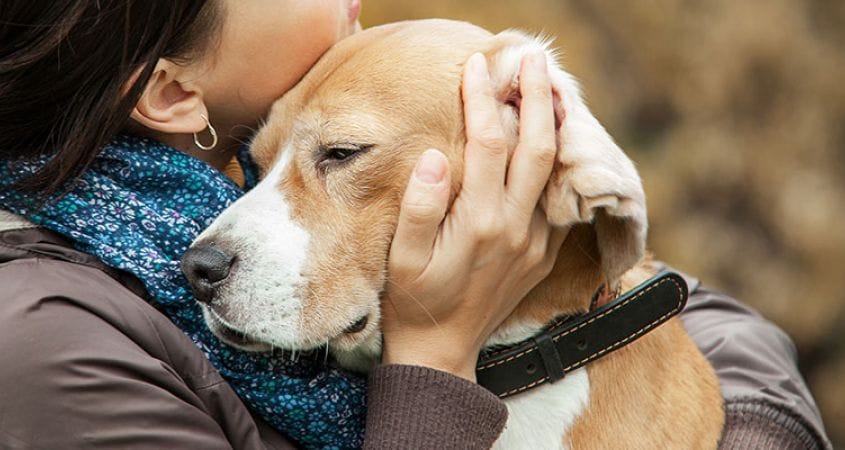

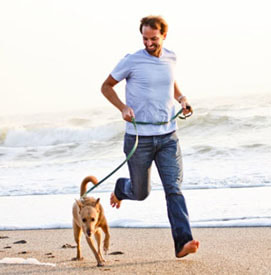

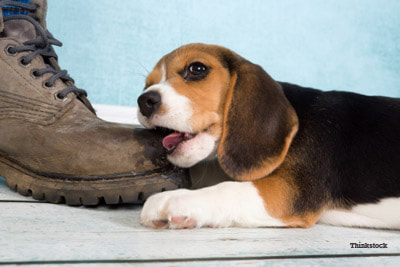
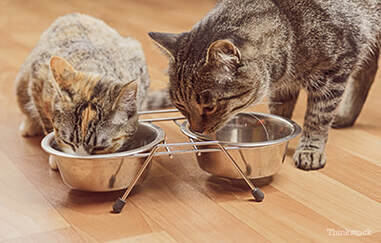
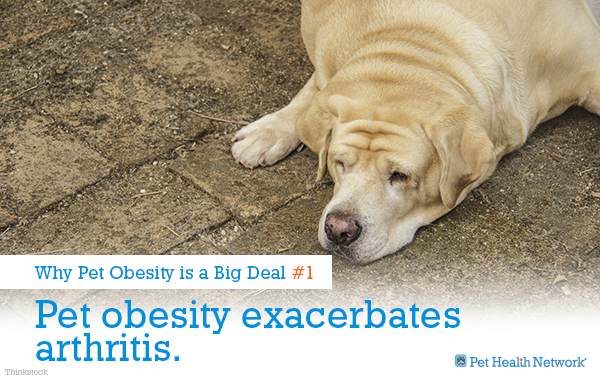
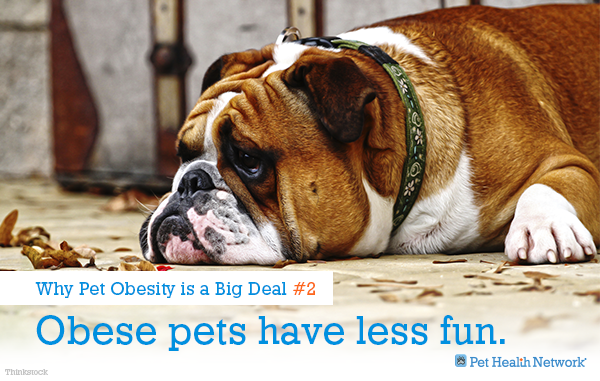
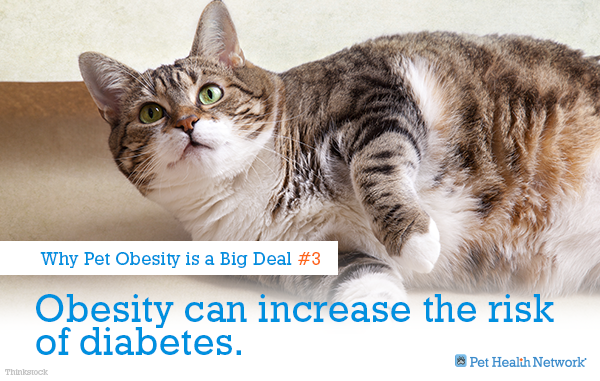
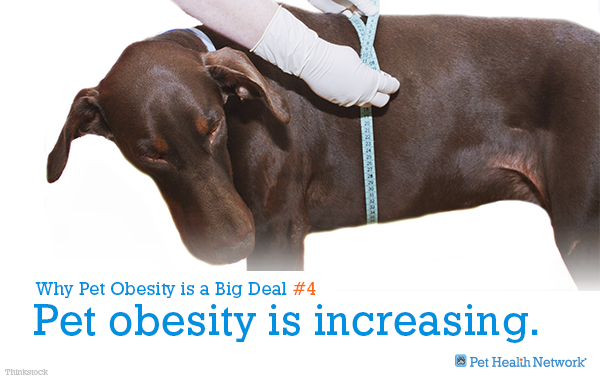
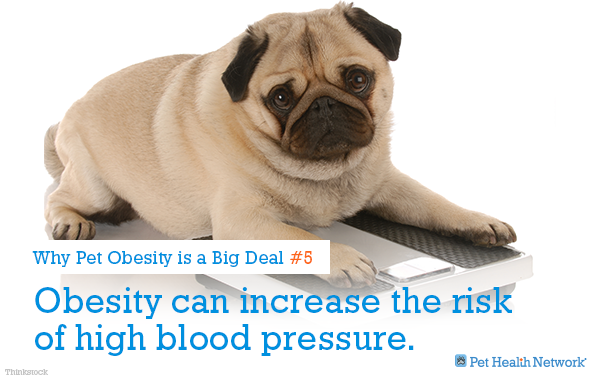
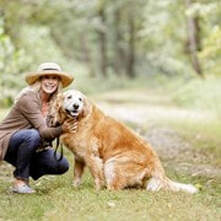
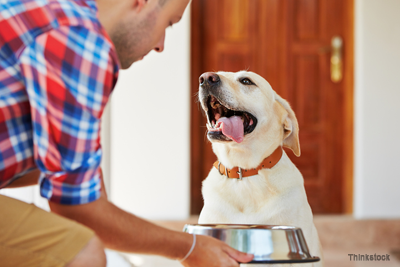
 RSS Feed
RSS Feed
